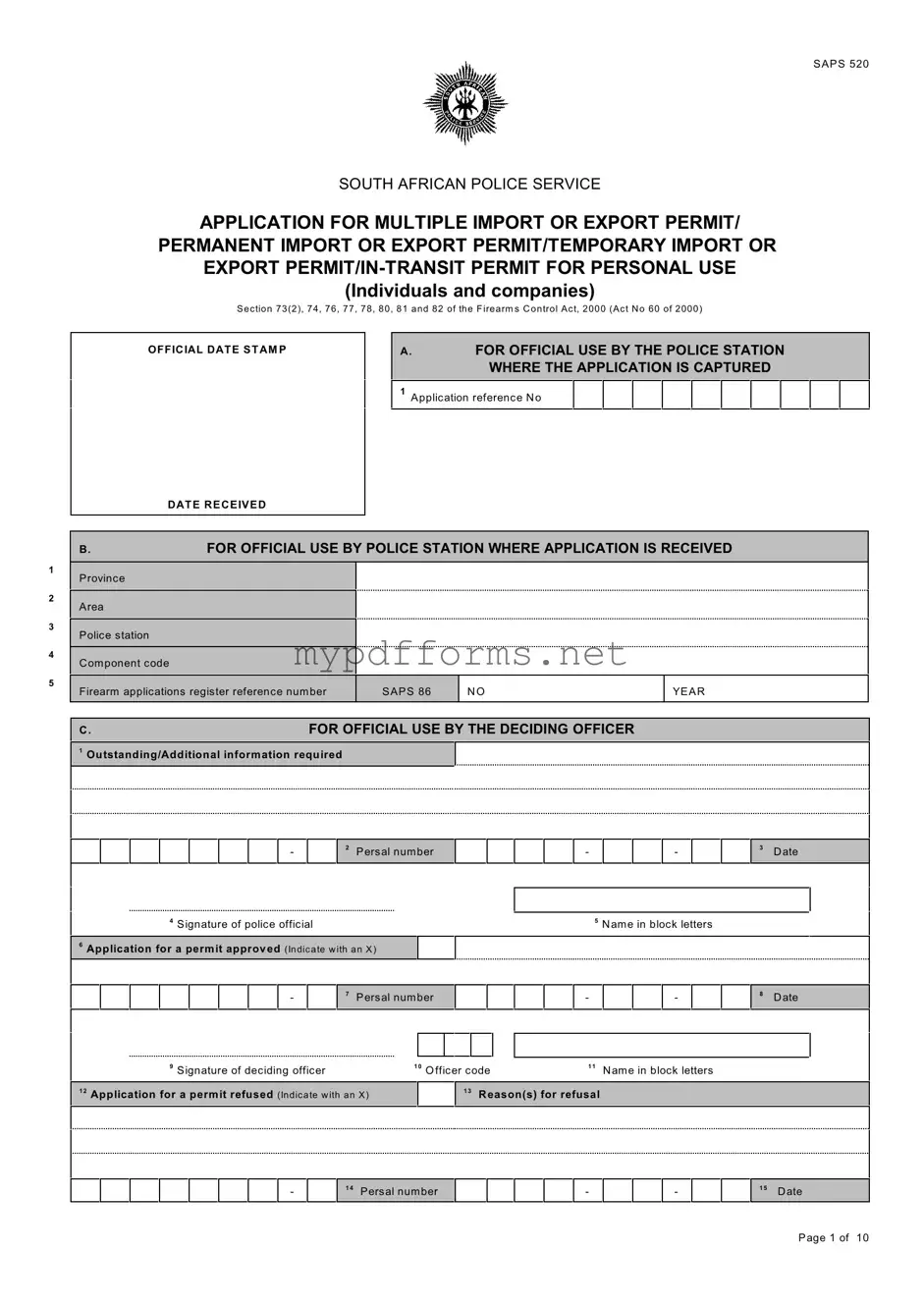The SAPS 520 form is similar to the ATF Form 6, which is used for the importation of firearms and ammunition into the United States. Both forms require detailed information about the applicant, including personal identification details and the specifics of the firearms being imported. The ATF Form 6 also includes sections for the type of permit being requested, similar to the various permit types outlined in the SAPS 520. Each form serves to ensure that the applicant meets legal requirements for firearm importation and that the relevant authorities can track and regulate these activities effectively.
Another comparable document is the Form 4473, which is used by Federal Firearms Licensees (FFLs) in the U.S. during the purchase of a firearm. Like the SAPS 520, the Form 4473 collects personal information from the buyer, including identification and background details. Both forms are critical in maintaining compliance with firearm regulations, ensuring that individuals purchasing firearms are legally permitted to do so. The 4473 focuses more on the sale process, while the SAPS 520 addresses import and export permissions.
The EU Firearms Pass is also similar to the SAPS 520, as it is used for the legal transport of firearms within European Union member states. Both documents require information about the firearm, including make, model, and serial number, as well as details about the owner. The EU Firearms Pass serves as a permit for individuals traveling with firearms, just as the SAPS 520 facilitates the legal import and export of firearms in South Africa.
The Canadian Firearms License Application is another relevant document. It requires applicants to provide personal information and details about the firearms they wish to possess. Like the SAPS 520, this application process aims to ensure that only qualified individuals can own or transport firearms. Both documents emphasize the importance of responsible ownership and adherence to legal standards regarding firearms.
The UK Firearms Certificate Application is also comparable. This form is used to apply for a certificate that allows individuals to possess, purchase, or acquire firearms. Similar to the SAPS 520, it requires detailed personal information and specifics about the firearms in question. Both forms are designed to regulate firearm ownership and ensure that applicants meet the necessary legal criteria.
In the context of managing safety and compliance, understanding various forms is essential. For instance, while the SAPS 520 form serves a specific purpose in firearm regulation, other documents like the Georgia PDF Forms play a vital role in different regulatory environments, each ensuring that necessary information is collected to uphold legal standards and promote public safety in their respective fields.
The Australian Firearms License Application shares similarities with the SAPS 520 as well. This application requires individuals to provide personal details and information about the firearms they intend to own. Both documents serve to regulate firearm ownership and ensure that applicants are legally permitted to possess firearms, thus contributing to public safety and responsible ownership.
In addition, the New Zealand Arms License Application is another document akin to the SAPS 520. It requires comprehensive information about the applicant and the firearms they wish to possess. Both forms are essential for ensuring that firearm ownership is regulated and that applicants are vetted to prevent misuse of firearms.
Lastly, the U.S. Customs and Border Protection (CBP) Form 7501 is relevant when discussing import permits. While it primarily deals with customs declarations for imported goods, it shares the need for detailed information about the items being imported, similar to the SAPS 520. Both forms aim to ensure compliance with national laws regarding the importation of specific items, including firearms.
